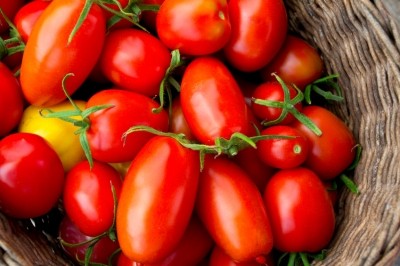Antioxidant rich diet linked to lower diabetes risk in women: Study

Women with the highest quintile of dietary antioxidant intake, measured by total antioxidant capacity (TOC), reduced their risk of T2D by 27%, found researchers from the Health Across Generations (HAG) Team, Centre of Research in Epidemiology and Population Health, Villejuif, France (an INSERM team).
Total antioxidant capacity (TOC) is an index which estimates the aggregated antioxidant capacity from the sum of all the individual antioxidant components in the diet.
“Our findings suggest that the TOC may play an important role in reducing the risk of T2D in middle-aged women,” wrote first author Francesca Romana Mancini.
The development of T2D may involve oxidative stress, recent evidence has suggested. A diet containing fruit, vegetables and beverages including tea contains a variety of compounds with antioxidative properties.
In this study, “the food groups that contributed the most to the TOC were fruit (23%), vegetables (19%), alcoholic beverages (15%) and hot beverages such as tea, chicory and hot chocolate (12%),” wrote the researchers.
“In our population study, women with higher levels of total antioxidant capacity (measured excluding the contribution of coffee), were characterised by a high consumption of fruit and vegetables and tea, which are known to be rich in antioxidant compounds,” they added.
The T2D risk reduction benefit of a higher antioxidant intake plateaued at a TOC level of 15 millimoles/ day (mmol/d), the team reported.
Results build on earlier findings
Earlier research had identified an inverse relationship between TOC and components of metabolic syndrome. However, this is the first study to examine the relationship of TOC with T2D risk directly. Previous studies had also shown that intake of various forms of vitamin E, but not vitamin C, flavonoids or lycopene, had an association with lower T2D risk.
'This work complements our current knowledge of the effect of isolated foods and nutrients, and provides a more comprehensive view of the relationship between food and type 2 diabetes' explained lead researcher Guy Fagherazzi, in charge of the diabetes research and complications programme in the Health across Generations team.
“This link persists after taking into account all the other principal diabetes risk factors: smoking, education level, hypertension, high cholesterol levels, family history of diabetes and, above all, BMI, the most important factor”, commented Mancini.
Perhaps surprisingly, the researchers excluded coffee from the calculation of TOC. This was because coffee has such a high antioxidant content, that it would have driven the association with T2D on its own, distorting the results. Furthermore, inclusion of coffee may have introduced confounding due to its known associations with smoking, high alcohol consumption and stressful lifestyle.
Study details
The study population comprised of 64,223 French women from the E3N-EPIC cohort aged between 40-65. The participants were free of diabetes and heart disease at baseline, and were followed for 15 years between 1993-2008. Dietary intake from a questionnaire completed by the subjects was used in conjunction with an Italian database (providing the antioxidant capacity of different foods) to calculate TOC.
“We have shown that an increased intake of antioxidants can contribute to a reduction in diabetes risk.” However, the mechanisms are not fully understood. “We know that these molecules counterbalance the effect of free radicals, which are damaging to cells, but there are likely to be more specific actions in addition to this, for example an effect on the sensitivity of cells to insulin. This will need to be confirmed in future studies,” concludes Mancini.
Source: Diabetologia
Published online, doi: 10.1007/s00125-017-4489-7
“Dietary antioxidant capacity and risk of type 2 diabetes in the large prospective E3N-EPIC cohort”
Authors: Francesca Romana Mancini, Guy Fagherazzi et al














